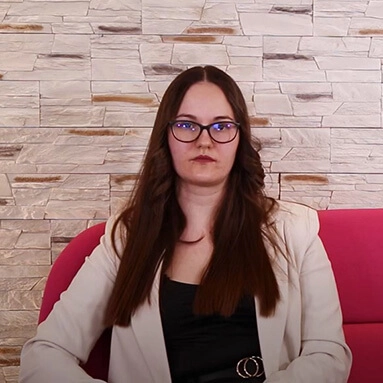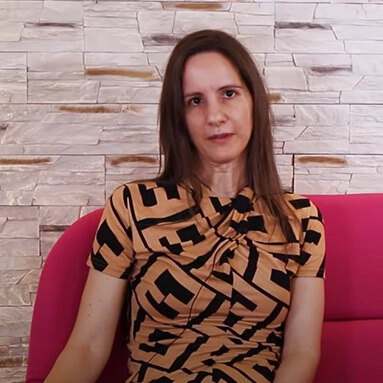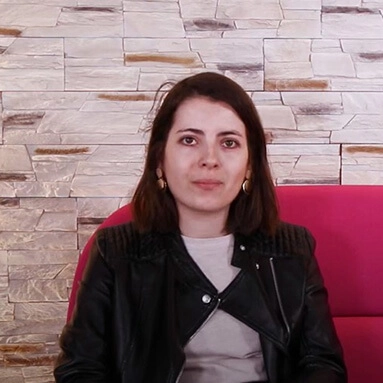First, it damages the tissue of the gums, causing irreversible destruction, which leads to what is known as gum recession. In more severe cases, the inflammation also destroys the other parts of the periodontium, such as the fibers and bone, weakening the tooth’s support. The tooth becomes loose, and the gum separates from the tooth root, creating deep pockets. These pockets contain a large amount of bacteria, inflamed tissue, and tartar, and they can become sites of constant inflammation, even unnoticed.
In cases of severe gum disease, we may notice the following symptoms:
Bleeding gums, swollen gums, loose teeth, pain when biting, bad breath even after brushing, and pus may drain from around the teeth.
So, these symptoms may occur, but they are not necessarily present in every case.
In some cases, gum disease develops almost symptom-free, and the first noticeable sign may be tooth mobility. In a small percentage of cases, genetic factors contribute to severe gum inflammation, which can appear even at a young age. However, in most cases, inadequate oral hygiene, poorly fitting crowns, and inaccurate fillings are the underlying causes. It is very important to diagnose gum disease early and begin treatment promptly.
After this long introduction, it’s only natural and exciting to ask the question: "Okay, but how?"
You may be thinking that you will have to face long, multiple, painful treatments, and perhaps you’re unsure if it’s worth it. The fact is, this is not a one-time treatment. There are no "miracle cures" that can resolve the problem with just one treatment!
The first and most important thing is a change in mindset!
You must decide for yourself whether you are willing to make some changes in order to achieve your goal (such as cutting back on smoking, following oral hygiene advice, or even changing your eating habits). Regular check-ups and tartar removal at least every six months are inevitable, as well as possibly repeating treatments as necessary.
But now, let’s finally take a look at what the most modern treatment consists of today!
More specifically, a series of treatments.
We complement traditional gum disease treatment with modern diode laser therapy.
- The first session includes ultrasonic tartar removal and polishing.
- Under local anesthesia, we perform the cleaning (curettage) of the pocket around the affected tooth/teeth using traditional manual instruments. Then, to disinfect the pocket, we use a laser, delivering it to the bottom of the pocket via a thin fiber optic. The aim is not only to destroy bacteria—thereby reducing inflammation and pain—but also to stimulate the "bone-building" cells.
- Then, ideally, for 3 consecutive days (or every other day), we perform a so-called biostimulation. (The goal is to reduce inflammation and pain, as well as to stimulate the regeneration of cells and tissues.) These treatments are completely painless and only take a few minutes.
- In stubborn cases, the above treatments may be repeated.
It may also be necessary to splint loose teeth.
Isn’t it terrifying when we suddenly notice that one or more of our teeth are loose? Even a perfectly healthy tooth?
Don't accept that you can no longer take a hearty bite!
Or perhaps think, "Unfortunately, this is my fate, as my parents also lost their teeth at a young age!"
Take action and, through our joint effort, let's stop the process and save your teeth!
Why do teeth become loose?
The most common culprit is tartar. This is a substance formed by the calcification of plaque left on the surface of the teeth due to improper cleaning, and it can only be removed in a dental clinic. (Ultrasonic tartar removal)
Tartar is full of bacteria, which first causes "only" gum inflammation (making the gums swollen, red, and bleeding), potentially leading to gum disease. (This is inflammation of the tooth's supporting structure, which often also leads to the formation of pockets around the tooth, where more bacteria proliferate, causing even more severe inflammation. This triggers a vicious cycle.)
As the supporting structure weakens, the teeth become loose. If not treated in time, they will be lost.
The above-mentioned issues not only pose a risk due to tooth loss but also serve as the foundation for a sneaky focus of infection!
What should we do if our gums become red, swollen, bleed, recede, or our teeth start to become loose?
Request an appointment for a FREE examination immediately!
Ultrasonic tartar removal will likely be needed primarily, and we will also teach you how to achieve even better home dental care. In many cases, this alone is not enough, and in such cases, a minor curettage may also be necessary.
If your teeth are already loose, splinting them may be necessary!
But what does splinting loose teeth mean?
We use a special fiberglass-reinforced, colorless fiber that is bonded to the loose teeth, connecting and splinting them. This stabilizes the teeth and prevents further movement.
How is splinting performed?
The teeth are thoroughly cleaned, their surfaces are coated with a special adhesive, the fiber is placed, and then covered with liquid filling material. It hardens under blue light. The procedure is completely painless (no drilling required) and is quick.
Additionally, let's not forget that the creation of fixed restorations (bridges) also counts as splinting!
Don't waste valuable time, as the process worsens every day!
Request an appointment as soon as possible, before it’s too late!



















